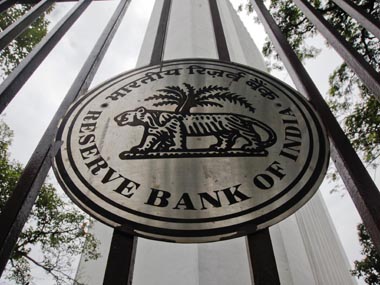Economists are near unanimous this time around in ruling out a rate cut by the Reserve Bank of India when it reviews its monetary policy on Tuesday.
However, as far as a reduction in cash reserve ratio (CRR) is concerned, there are conflicting opinions.
Of 33 respondents to a Reuters poll , 16 expected a CRR cut on today of either 25 or 50 basis points.
[caption id=“attachment_561155” align=“alignleft” width=“380”]  However, as far as a reduction in cash reserve ratio (CRR) is concerned, there are conflicting opinions. Reuters[/caption]
The RBI has, in its last review, indicated that an easing of policy rates is possible in the fourth quarter of the financial year, i.e. January-March.
Nothing has changed drastically that warrants the central bank to cut its policy rates earlier than that.
As a precondition for a rate cut, the RBI had urged the government to take steps to correct fiscal slippages. The widening current account and fiscal deficits have been a major concern for the RBI.
In its attempt to push the central bank into action, the government recently introduced a slew of reforms, which are yet to show concrete results.
Of the steps announced, opening up of the retail sector is the only one that has passed the muster.
RBI Governor D Subbarao and his deputy governors have been supportive of this policy as they expect the move to bring down inflation.
The government has managed to pass the bill allowing FDI in retail sector in both houses of Parliament, which is a huge positive from the capital inflow perspective.
However, the policy is unlikely to result in a sudden huge inflow of foreign capital, so as to narrow the current account deficit. Foreign retailers are unlikely to rush in as power to permit setting up shops remains with the state governments.
Adding to the worries is the controversy surrounding Wal-Mart’s disclosure on expenditure incurred in the US forlobbying for its India entry. The US retail giant’s investment in Bharti-Wal-Mart is already under enforcement directorate probe.
As far as a cut in fuel subsidy is considered, the government has increased diesel prices and also capped the discounted sale of LPG cylinders.
But now there are indications that the government is likely to go back on this and increase the number of cylinders to be sold under the subsidy scheme.
“Contrary to dismal trends last month, the delta change in the recently released high frequency indicators is positive, but still far from optimal,” Citi said in a recent research report.
The brokerage expects the RBI to hold rates on Tuesday.
Inflation, as measured by the wholesale price index (WPI), came down to 7.24 percent in November from 9.46 percent in the same month a year ago and 7.45 percent a month ago.
Core inflation also registered a decline to 4.45 percent, which has been attributed to base effect.
CPI inflation, meanwhile, accelerated to 9.9 percent from 9.8 percent a month ago.
October factory output, or IIP, witnessed a surprise 8.2 percent growth as against a decline of 0.7 percent a month ago. The jump has been attributed to the effect of low base last year and a shift in festival this year to October.
The declining trend in inflation is by and large in line with the RBI’s own projections. In the last policy review, the central bank said it expected inflation to decelerate by January.
“Given the fact that growth is in shambles, and inflation is sort of coming under control, I think they will reiterate the guidance this time and say a rate cut is likely in January,” Abheek Barua, chief economist with HDFC Bank, was quoted as saying in the Reuters poll.
However, the government is probably hoping against hope that the RBI will support growth by affecting a rate cut.
In the mid-year economic review tabled in Parliament yesterday, the government officially reduced its growth projection for the current financial year to 5.7 percent. It, however, expected a pick-up in growth in the second half of the year.
But Subbarao has until now managed to ward off political influences. From a pure economy point of view, it seems to be a status quo on rates.
At the most, the government will have to be content with another 25 basis points CRR cut, as liquidity deficit in the system as measured by the banks’ daily repo borrowing is a high Rs 92,000 crore.


)
)
)
)
)
)
)
)
)



